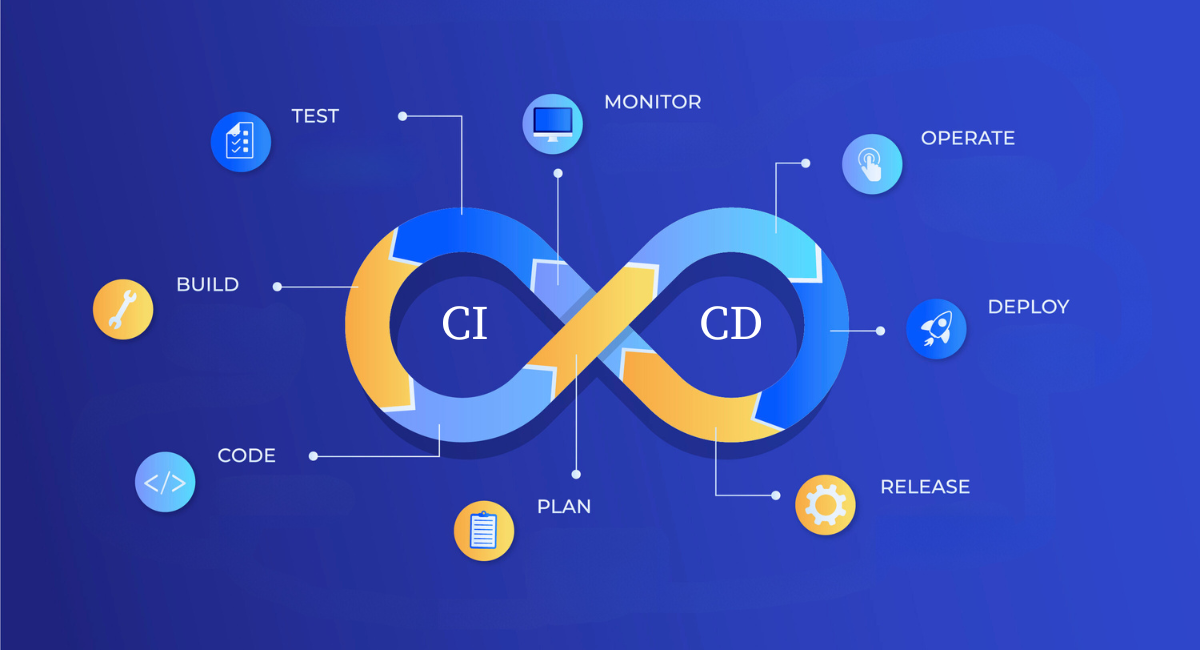Subtotal ₨ 0
Introduction to CI/CD
Continuous Integration and Continuous Delivery (CI/CD) are crucial practices in modern software development. They automate the steps in the software lifecycle, helping teams deliver code faster, with fewer errors, and greater confidence. These methodologies have become vital in the cloud-native and fast-paced world of today, supporting scalable and consistent development.
Why CI/CD Matters in Modern Development
The significance of CI/CD becomes clear when we consider how it overcomes the limitations of traditional software development cycles. Traditional approaches often involve long release cycles, manual testing, and error-prone deployments. In contrast, CI/CD allows teams to integrate code frequently, run automated tests, and deploy to production continuously. This reduces bugs, shortens feedback loops, and aligns software delivery with rapidly changing business needs.
Designing Efficient CI/CD Pipelines
To design a successful CI/CD pipeline, start by understanding your application architecture and development workflow. Break the pipeline into clear stages—build, test, deploy—and automate as much as possible. Using tools like Git for version control, Docker for containerization, and artifact repositories ensures consistency, traceability, and performance throughout the lifecycle.
Optimizing CI/CD for Serverless Applications
Serverless applications introduce specific challenges that require a tailored approach. Focus on deploying functions independently, using tools like AWS SAM or the Serverless Framework. Automating infrastructure provisioning and using monitoring tools to ensure observability can significantly reduce risks. Frequent, smaller deployments will also improve rollback capabilities and minimize downtime.
How CI/CD Enhances Software Quality and Speed
One of the main advantages of CI/CD is its ability to speed up development cycles without compromising quality. By committing code regularly and running automated tests, bugs are detected early, allowing teams to quickly address issues. With faster feedback and continuous integration, features are delivered faster, improving user satisfaction and enabling quicker responses to market needs.
Integrating Testing into CI/CD Pipelines
Testing plays a critical role in ensuring the success of a CI/CD pipeline. Start with unit tests, then integrate integration, performance, and security tests as you scale. Automated testing tools like JUnit, Selenium, and Jest ensure that each code change is tested thoroughly. Moreover, tracking test coverage ensures that you identify gaps and improve code quality over time.
Choosing the Right CI/CD Tools
Selecting the right CI/CD tools is crucial for your team’s efficiency. Consider factors like ease of integration, scalability, and community support. Jenkins is highly customizable and adaptable, while GitLab CI offers an all-in-one DevOps platform. CircleCI is known for performance, and GitHub Actions integrates seamlessly with GitHub repositories. Assess your team’s needs, existing systems, and the tool’s ability to scale with future growth.
Boosting Team Agility with CI/CD
CI/CD practices enhance team agility by reducing manual processes and accelerating feedback loops. Automating testing and deployment helps teams quickly adapt to changes and deliver features faster. With less time spent on repetitive tasks, teams can focus on innovation and address evolving user needs, improving productivity and responsiveness.
Conclusion:
CI/CD is more than just automation—it’s a strategic approach that transforms software development. Whether you’re working with microservices, monoliths, or serverless applications, CI/CD enhances quality, collaboration, and delivery speed. By combining effective tools, smart pipeline designs, and a strong testing-first mindset, your team can continuously improve and deliver software faster.

